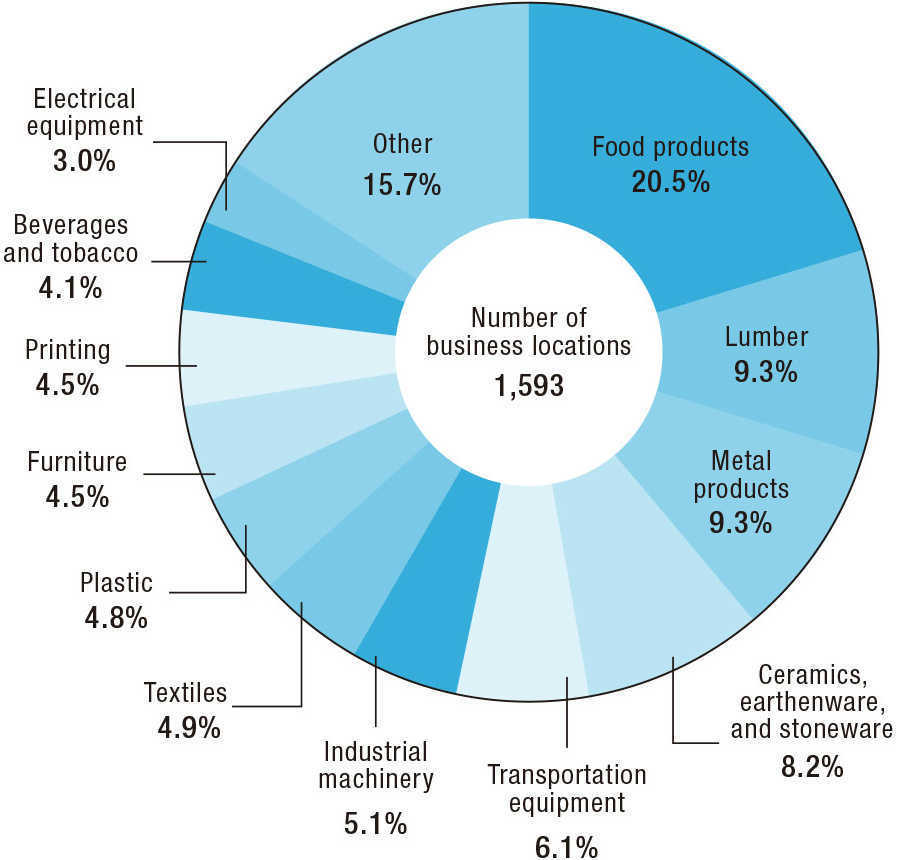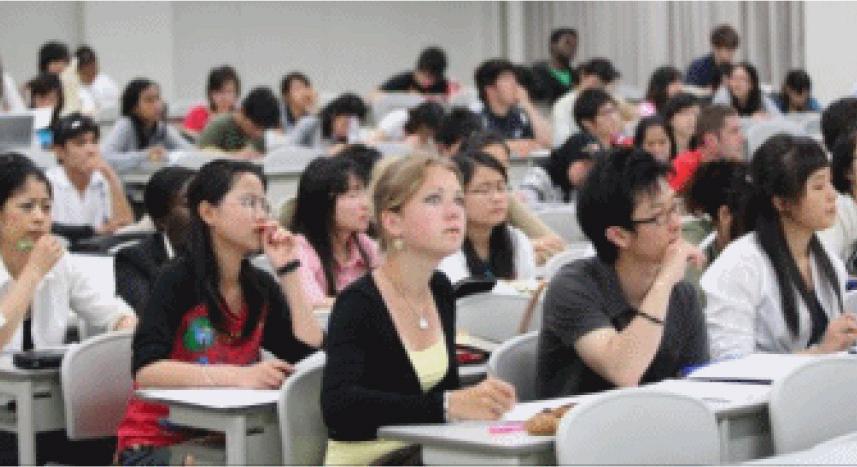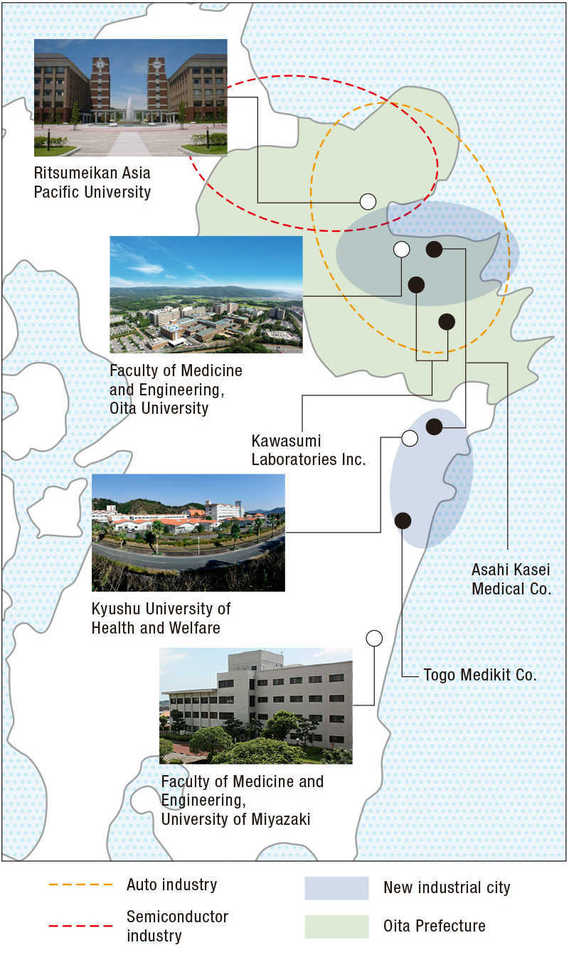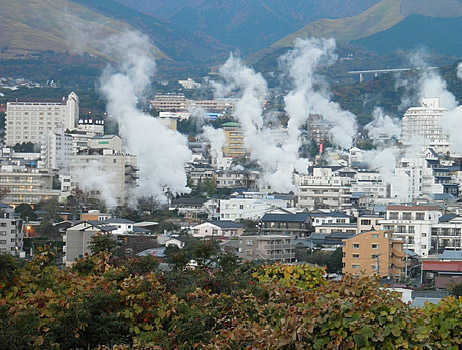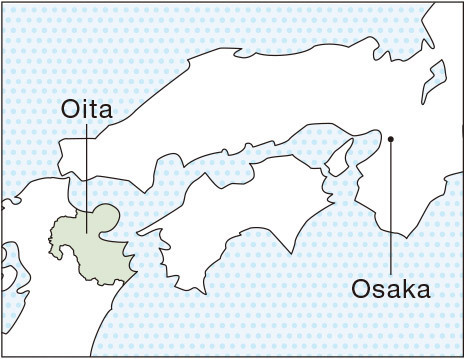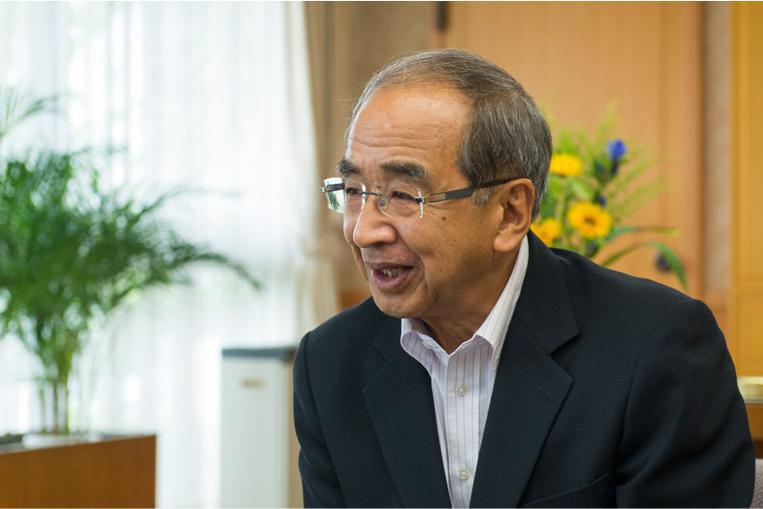Oita Prefecture is located in the northeastern part of Kyushu, Japan’s gateway to the rest of Asia. It is known as the birthplace of cultural luminaries, such as Yukichi Fukuzawa and Yaeko Nogami. It has a rich natural environment, leading Japan in the number of springheads and in the volume of water from its hot springs, and it attracts many domestic and international visitors. Oita also has long been a prefecture with a strong industrial sector, including various types of manufacturing.
In the 1960s the process of industrialization accelerated, and companies in a number of heavy industries, notably steel, chemicals, oil, machinery, and shipbuilding, set up plants here. Since then the prefecture has attracted firms in such fields as semiconductors, software, precision equipment, and automobile-related production, giving it a well-balanced economy not overly dependent on any particular industry.
Governor Katsusada Hirose notes that Oita is already home to leading companies in a variety of fields and that it is easy for other companies to form links with them. This feature, he declares, makes Oita a good choice as a site for companies from other countries. The prefecture offers incentives including exemptions from fixed-asset taxes and taxes on real estate income in line with amounts invested, along with financial support of up to JPY 5 billion (USD 40 million), and it also provides services including international business-matching and seminars.
Oita is now cooperating with neighboring Miyazaki Prefecture in implementing a joint “Eastern Kyushu Medical Valley” project. This aims to promote exports of Japanese medical devices and technology to other Asian countries, to which these prefectures are geographically close, by developing partnerships between local universities with strengths in medical treatment and local companies that produce equipment for treatment of blood and blood vessels. This two-prefecture region leads Japan in production of dialyzers and vascular catheters, and it leads the world in production and development of blood purification products. Oita is now seeking to draw on the strength of this accumulated technology by promoting the development of the robot industry for application in the fields of medical care, welfare, and nursing care. Over the past five years the project has roughly doubled the number of manufacturers of medical devices in the prefecture.
Meanwhile, Oita is developing itself as a destination for medical tourism, aiming to attract affluent people from overseas with packages that also draw on local resources like the prefecture’s hot springs.
Oita Prefecture is also actively promoting admission of international students to its universities. It currently hosts more than 3,200 such students. And many of those who have already graduated from universities in Oita have found jobs with major Japanese companies. Postings by such students and graduates on social media are spreading the word about the prefecture’s attractions, thereby raising its profile and promoting international exchanges. Oita hopes that international students will help link the prefecture with the rest of the world.
“Oita has hosted many tourists, and it has developed as a place that welcomes people from overseas, including students, and different cultures. Also, we have clusters of companies in various fields of industry, making this a place where it is easy to find business partners. So the prefecture offers an ideal environment for companies setting up new operations.” So declares Governor Hirose, saying, “I strongly hope companies will consider Oita as an investment site.”
Oita: Home to diverse industries
The prefecture’s industrial structure ranges from traditional manufacturing to fields with cutting-edge technologies.
A large contingent of international students
Oita has hosted international students from over 90 countries, and it ranks second among Japan’s prefectures in the number of such students per capita.
Main participants in the “Eastern Kyushu Medical Valley” project
This project, based on cooperation among government, industry, and academia, aims to promote exports of medical devices and technology and develop human resources capable of providing advanced medical treatment for blood and blood vessels. The initiative has also brought the admission of doctor s and medical technicians from countries including Thailand and Malaysia.
Basic facts and figures
Oita Prefecture has a population of about 1.17 million. It is known for its many hot spring resorts, such as Beppu and Yufuin, with springs that produce water of various types. In total, the springs produce 285,553 liters of hot water per minute from 4,411 springheads. With mountains covering 70% of its area, the prefecture has many rivers and an abundant supply of fresh water. Visitors are treated to the prefecture’s natural bounty of foods from both land and sea.
Governor Katsusada Hirose
Born in 1942 in Hita, Oita Prefecture. After graduating from the Faculty of Law at the University of Tokyo, he joined the Ministry of International Trade and Industry (MITI, now Ministry of Economy, Trade and Industry [METI]). He served as first secretary at the Japanese embassy in Spain and as executive secretary to the prime minister. In 2001 he became vice-minister of economy, trade and industry. In 2003 he was elected governor of Oita Prefecture, and he is currently serving his fourth term in this post.































































































































